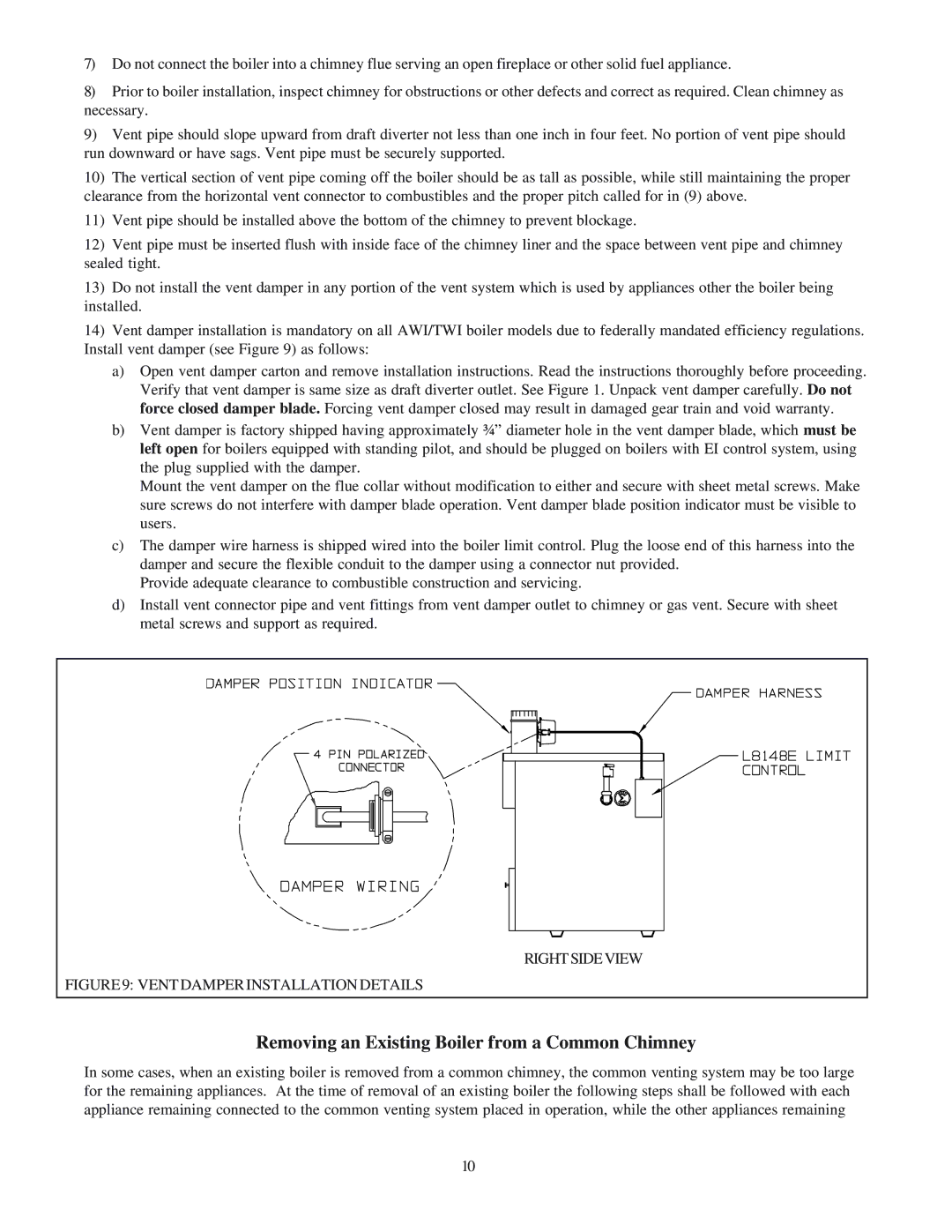AWI262, AWI095, TWI095, AWI195, AWI037 specifications
Crown Boiler is a renowned name in the heating industry, providing high-quality, efficient heating solutions that cater to various residential and commercial needs. Among its impressive lineup, the AWI and TWI series stand out for their design, technology, and performance.The Crown Boiler AWI061 and TWI061 are part of the Hydronic Boiler range, designed to deliver efficient hot water heating. The AWI series features an advanced pressure-jet design that allows it to operate with exceptional fuel efficiency, reducing operating costs for homeowners and businesses alike. Additionally, these models come equipped with an integrated pump system that ensures a consistent supply of hot water, making them ideal for both space heating and domestic hot water applications.
Meanwhile, the AWI162 and AWI128 models are engineered for higher output, addressing larger heating needs without compromising efficiency. These models showcase a robust heat exchanger made of durable cast iron, promoting longevity and effective heat transfer. The AWI series boilers feature a modern control system that allows for precise temperature management, enhancing comfort while minimizing energy consumption.
The Crown Boiler AWI295, on the other hand, steps up with a significant heating capacity suited for commercial applications. This model is designed with advanced safety and efficiency technologies, including an intelligent control module that monitors temperature and pressure, ensuring optimal performance while preventing malfunctions. The large water volume design allows for enhanced thermal stability and consistent heating output.
A notable characteristic across these models is their ease of installation and maintenance. Crown Boiler has engineered the units with user-friendly features, including accessible components and simplified diagnostics that help technicians service the boilers swiftly. Moreover, the durability of cast iron construction ensures that these units can withstand high thermal stress while delivering reliable performance over the years.
In summary, Crown Boiler’s AWI061, TWI061, AWI162, AWI128, and AWI295 models offer a range of solutions equipped with advanced technologies and features designed for efficiency and reliability. These boilers are suitable for diverse heating needs, promising optimal comfort and convenience in both residential and commercial settings. With Crown Boiler's longstanding commitment to quality, customers can be assured of a robust heating solution backed by exceptional service.

